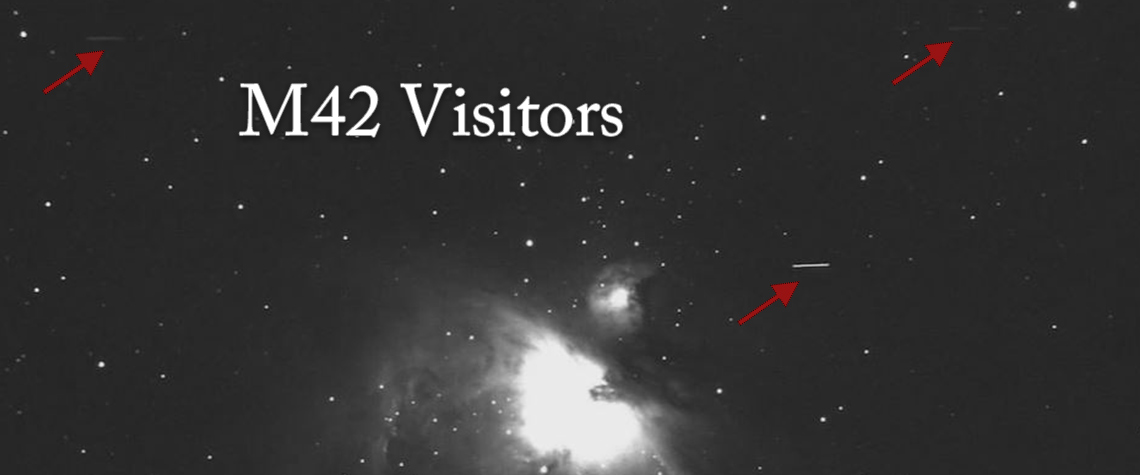Page 8


M42 Encounters the Geostationary Operational Environmental Satellites
By Don Carona
During the night of January 24, 2019 (CST), I had to swap out one of the cameras on the 14 inch telescope.
- After I completed a quick focusing run, I opened up my satellite tracking software and noticed that a few of the GOES satellites would be near M42, The Great Nebula in Orion.
- I slewed the telescope and began taking 10 second exposures and the satellites soon appeared.
- I took a series of 12, 10 second exposures and was able to capture the GOES 13, 14 and 16 satellites.
The GOES satellites are in geosynchronous equatorial orbits (geostationary) and M42 is very near the celestial equator, which is aligned with Earth's equator.
I don't recall ever catching one of the GOES satellites when imaging M42 and thought it made a nice backdrop. If you stop the animation such that you can see all three in a frame, the GOES 16 is the brightest one nearest M42. GOES 13 is to the upper right and GOES 14 is furthest to the left.
William Optics FLT-110 + SBIG STF-8300 CCD
Frame 01: 2019-01-25T01:54:01.449
Frame 12: 2019-01-25T01:56:41.170
Question for the Curious
Did you notice how the three satellites move across the images at the same rate? If they are geostationary, why do they leave trails? Hint: The telescope is tracking the stars at the siderial rate.
Answer: The mount/telescope is tracking the stars. The stars are moving in the opposite direction of the satellites (Earth's rotation). The satellite trails appear because they are moving backwards with respect to the telescope/camera.